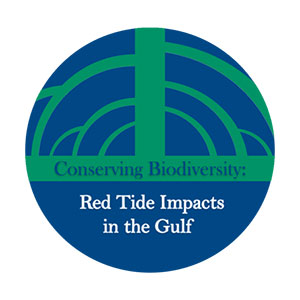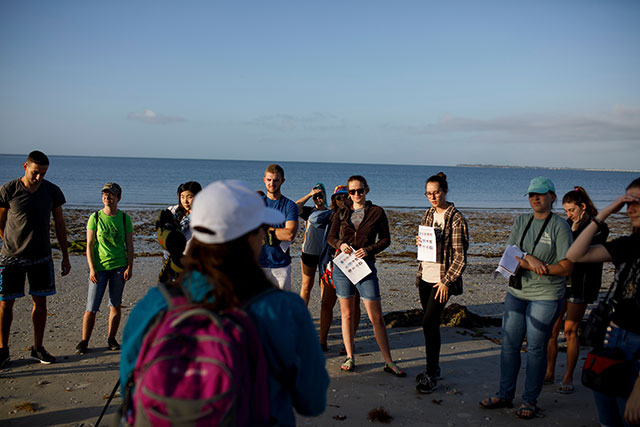Florida’s prolonged red tide outbreak beginning in 2017 grabbed international attention, as scores of dolphins, sea turtles and other marine life washed ashore dead or dying.
The biological impacts of the phenomenon and what they could mean for the future will be at the forefront March 14 when scientists, policymakers and educators from around the state gather for a Biodiversity Conference at Florida Gulf Coast University.
The daylong event, which is free and open to the public, begins with a morning panel discussion of scientific evidence of red tide’s impacts on species and ecosystems. Afternoon sessions will further explore science, policy and education related to the issue. [ Register to attend ]
 The main goal is to gain a clearer picture of how the algal blooms affect the Gulf of Mexico’s biodiversity — its variety of life forms — as well as the food chain in coastal ecosystems.
The main goal is to gain a clearer picture of how the algal blooms affect the Gulf of Mexico’s biodiversity — its variety of life forms — as well as the food chain in coastal ecosystems.
The conference, which runs from 8 a.m. to 5 p.m. in FGCU’s Cohen Center, will also help enhance community awareness of the issue and identify gaps in scientific knowledge, policy framework and educational efforts related to how such outbreaks affect coastal biodiversity, according to Dr. Kara Lefevre, an assistant professor in the Department of Marine & Ecological Sciences.
She and other FGCU faculty will be joined by representatives of organizations such as the Florida Fish and Wildlife Conservation Commission, Calusa Waterkeeper, Center for Biological Diversity, Conservancy of Southwest Florida, Sanibel-Captiva Conservation Foundation and the Clinic for the Rehabilitation of Wildlife.
Harmful algal blooms such as red tide occur when microscopic algae multiply to higher-than-normal concentrations, often discoloring the water. High concentrations can be toxic to fish, marine mammals and birds — as occurred in the 2017-19 outbreak along the gulf coast.
Although red tide also has a negative ripple effect on economic health and quality of life along the coast, the conference is intended to focus primarily on biological issues, according to Lefevre. She is part of The Biodiversity Group, an association of FGCU faculty, staff and students as well as community partners, which formed in 2016 and organized the first Biodiversity Conference in 2017. About 200 people attended that event, where international experts examined how habitat fragmentation, climate change and invasive species are affecting Florida.
“The impetus for our efforts in founding this Biodiversity Group at FGCU is that we know biodiversity loss is one of the major global impacts of human activity,” Lefevre said. “The group has worked to advance understanding and protection of regional biodiversity through research, education, resource management and public policy.”
That’s good news for lovers of dolphins, sea turtles and other marine life in the balance.
